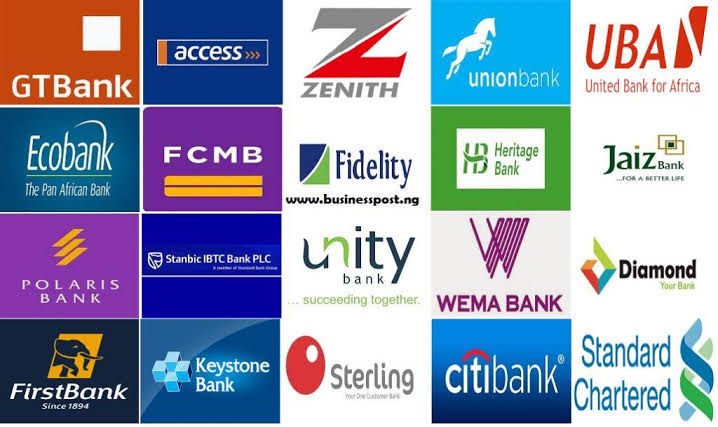By Bamidele Ogunwusi
Copyright independent

LAGOS – Despite boasting record profits and strong capital buffers, Nigerian banks are facing intensifying criticism over their limited impact on the country economy.
Analysts, policymakers, and industry stakeholders say the sector’s impressive balance sheets have not translated into the credit and investment needed to drive broad-based economic development.
Profits Surge, Credit Lags
The latest financial stability report from the Central Bank of Nigeria (CBN) paints a striking picture: combined pre-tax profits of commercial banks grew by more than 35 percent year-on-year in the first half of 2025.
Tier-1 institutions such as Zenith Bank, Guaranty Trust Holding Company (GTCO), and Access Holdings reported dou-ble-digit growth in net interest income and fee-based earnings.
Yet this boom masks a deeper problem. Private-sector credit as a share of Nigeria’s gross do-mestic product remains below 25 percent—far short of the 60–100 percent levels common in peer emerging markets such as South Africa, Malaysia, or Brazil.
In simple terms, banks are making money, but much of it is not being channeled into financ-ing the factories, farms, and small businesses that could create jobs and lift incomes.
“The numbers highlight a structural imbalance,” said Kemi Ajayi, senior economist at Lagos-based CardinalStone. “Banks are earning from trading in government securities and for-eign exchange, but their exposure to real-sector lending is stagnant. That undermines the broader development agenda.”
Preference For “Safe” Assets
Analysts point to Nigeria’s high inflation—above 20 per-cent—and a benchmark interest rate of 26.75 percent as key factors shaping lending behaviour.
Government bonds and CBN instruments offer double-digit yields with negligible default risk, making them far more attractive than lending to small and medi-um enterprises (SMEs) or fund-ing long-term industrial projects.
A chief risk officer at a lead-ing Tier-1 bank, who requested anonymity, explained the calcu-lus: “When you can earn 18 to 20 percent risk-free on treasury bills, why lend to a small manu-facturer who might default or struggle with power outages and policy uncertainty? Our primary obligation is to protect depositors’ funds.”
The result is a cycle of risk aversion. Banks avoid lending to sectors they deem risky, which in turn deprives those sectors of the capital needed to become more productive and less risky. “It’s a chicken-and-egg problem,” said Professor Bamidele Akinbami of the University of Ibadan. “With-out credit, businesses cannot scale or improve efficiency. But without scale and efficiency, they remain unattractive to lenders.”
Limited SME Support
SMEs, widely regarded as the engine of job creation, have been hit hardest. According to the Nigerian Economic Summit Group (NESG), SME lending ac-counts for less than 10 percent of total bank credit. High collateral requirements—often demanding property titles in urban areas— put formal bank loans out of reach for many entrepreneurs.
The ripple effects are signifi-cant. Nigeria’s unemployment rate, though improved from its pandemic-era peak, remains stubbornly high. Sectors that could absorb labour, such as agro-processing, light manufac-turing, and technology startups, struggle to access working capital or long-term financing.
“Banks tell us to show three years of audited financial state-ments and tangible collateral,” said Funmi Oyedele, owner of a mid-sized food-processing compa-ny in Ibafo, Ogun State. “But how can a young business meet those conditions? We end up relying on expensive informal loans or slow organic growth.”
Government And CBN Interventions
Recognising the gap, the CBN and Federal Government intro-duced various development fi-nance initiatives, including the Anchor Borrowers’ Programme for agriculture and the Real Sec-tor Support Facility for manu-facturing. The Bank of Industry (BoI) also provides subsidised loans to strategic industries.
While these programmes have supported thousands of smallholders and manufacturers, their scale remains modest rela-tive to Nigeria’s $470 billion econ-omy. More importantly, they are largely funded or guaranteed by the government, rather than by commercial bank balance sheets.
“Public interventions cannot replace a robust banking sector willing to take calculated risks,” noted Chika Okonkwo, a finan-cial inclusion advocate. “The state can provide incentives or risk-sharing facilities, but private capital must ultimately drive sus-tainable growth.”
Structural Constraints And Policy Gaps
Bank executives counter that Nigeria’s structural environment raises the cost of lending. Erratic power supply, poor transport in-frastructure, and currency vola-tility all erode borrower viability. Legal enforcement of collateral is slow, and credit bureau cover-age, though improving, remains incomplete.
“These are not excuses; they are realities,” said a senior exec-utive at United Bank for Africa (UBA). “Without stronger credit infrastructure and faster dispute resolution, lending to SMEs will remain costly and risky.”
Regulatory policies may also have unintended consequences. The CBN’s cash reserve ratio (CRR) requires banks to park a large share of deposits as non-in-terest-bearing reserves, limiting funds available for loans. High monetary policy rates, intended to fight inflation and stabilise the naira, also raise the cost of credit for businesses.
Calls For Reform And Innovation
Economists and industry ex-perts are urging a combination of carrot and stick to change the status quo. Proposed reforms in-clude:
Risk-sharing facilities: Gov-ernment-backed guarantees could cover a portion of SME loans, encouraging banks to ex-tend credit without shouldering all the risk.
Tax incentives: Offering tax breaks on interest income from priority-sector lending might tilt the profitability equation away from government securities.
Credit infrastructure: Strengthening collateral regis-tries and accelerating judicial processes for loan recovery would reduce perceived risk.
Technology-driven credit scoring: Expanding the use of al-ternative data—such as mobile money records and utility pay-ments—could help banks assess borrowers with limited formal history.
Some banks are experiment-ing with digital lending platforms and partnerships with fintech firms to reach underserved markets. Wema Bank’s ALAT and Access Bank’s SwiftPay are examples of attempts to widen credit access using data analyt-ics and mobile channels. Yet these initiatives remain small relative to the scale of Nigeria’s financing needs.
The Broader Economic Stakes
Nigeria’s ambition to diver-sify away from oil and achieve 4–5 percent annual GDP growth depends heavily on expanding manufacturing, technology, and export-oriented agriculture. All require patient, medium- to long-term capital.
“If banks remain focused on short-term, low-risk gains, the structural transformation the government envisions will stall,” warned Professor Akinbami. “You can’t industrialise without credit.”
The IMF and World Bank have echoed these concerns, re-peatedly urging Nigeria to deepen financial intermediation as part of its economic reform agenda. Increased lending to productive sectors would not only boost output and employment but also broaden the tax base and strengthen the banking system’s long-run stability.



